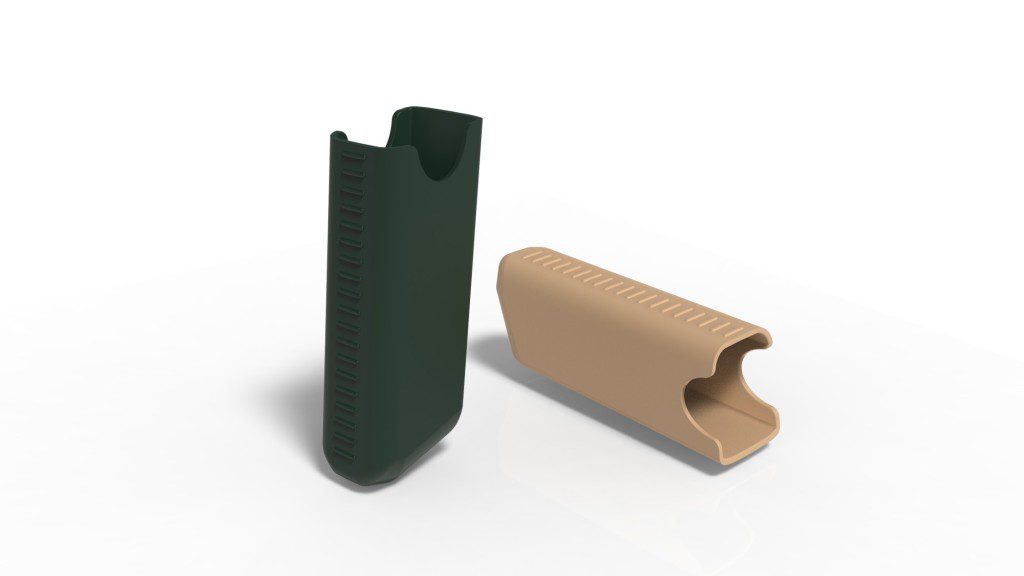Mold Inserts – Incorporating Flexibility into the Mold Design Yields Savings
The typical single-cavity injection mold produces a single part. In the past, we have written about R&D molds that are designed with interchangeable mold inserts to support the variable needs during the development process. In some cases, single-cavity production molds require this level of variability but for a different purpose.
The Application
A Client had recruited Natech to design and develop a plastic sleeve for an industrial consumer product. The sleeve provided a ruggedized protective covering on a life-critical product. It needed to securely fit into place and allow for easy removal.

The Situation
The design followed the normal process until design completion and prior to mold design, when the Client introduced a scope change. The component would need to mate with eleven different products which were similar but different. Changing a single feature would have allowed for the use of mold inserts, but all eleven products varied in overall size as well as features.
The impact of this change would be that instead of designing and building a single mold, Natech would have to design and build eleven molds. The cost would increase from under $30k to over $300k.
The Tactic
Embracing the systems approach to manufacturing means considering and managing not just cost, risk, quality, and schedule in isolation of one another but in relation to one another. This is a balancing act, and oftentimes the Natech team has a better understanding of the manufacturing while the client has a better understanding of the performance and market. This knowledge gap can only be bridged through effective communication.
The Natech Engineers decided the best approach would be to reuse as much as possible preferably with mold inserts. If the part design had to be flexible to allow for multiple SKUs, the mold design would have to be flexible to allow for multiple part designs. This would come at a cost because production lead times would be impacted when the client ordered more than one variation at a time.
However, the cost savings in the capital investment were important to the Client because the products being developed were new and the demand was uncertain. The risk of a delayed order was worth accepting to alleviate the market risk.
The Action
For the mold design, the Natech engineers incorporated complete interchangeability from the ground up. The interchangeable mold inserts included interchangeable cores, interchangeable cams, and interchangeable ejector sleeves to accommodate all size and feature variations for all eleven SKUs. This approach paid for itself by the third variation. Overall the client saved $50,000 on the capital investment in a design that incorporated mold inserts. The mold design and build for future variations was reduced by 35% and a savings of 20% over the alternative.

Any design and development program brings unique challenges so engineers must engage in systems thinking to discover the optimal solutions for clients. Systems thinking means looking at the broader picture and understanding how the different parts contribute to maximize the performance of the whole. This means understanding the options, risks, costs, constraints, and objectives from the client’s perspective.
